Table of Contents
Ever looked at a kettlebell and thought, "That looks cool, but also kinda scary?" You're not alone. Many beginners feel intimidated by these cannonball-like weights. But guess what? They're not just for the super-fit gym crowd. An easy kettlebell workout for beginners is totally doable and, dare I say, fun! This article is your guide to ditching the intimidation and embracing the kettlebell. We’ll start with a simple 20-minute routine that’ll get you moving and grooving. You'll learn how to hold a kettlebell correctly, which is crucial to avoid looking like a confused octopus. Then, we'll break down six must-know exercises that target your whole body. Not sure what kind of kettlebell to get? We'll cover that too. And, if you're feeling adventurous, we'll even peek at an intermediate workout. Plus, we will touch on if kettlebells can actually help you lose weight. So, ready to swing into action? Let's get started!
Getting Started: The 20Minute Beginner Kettlebell Workout
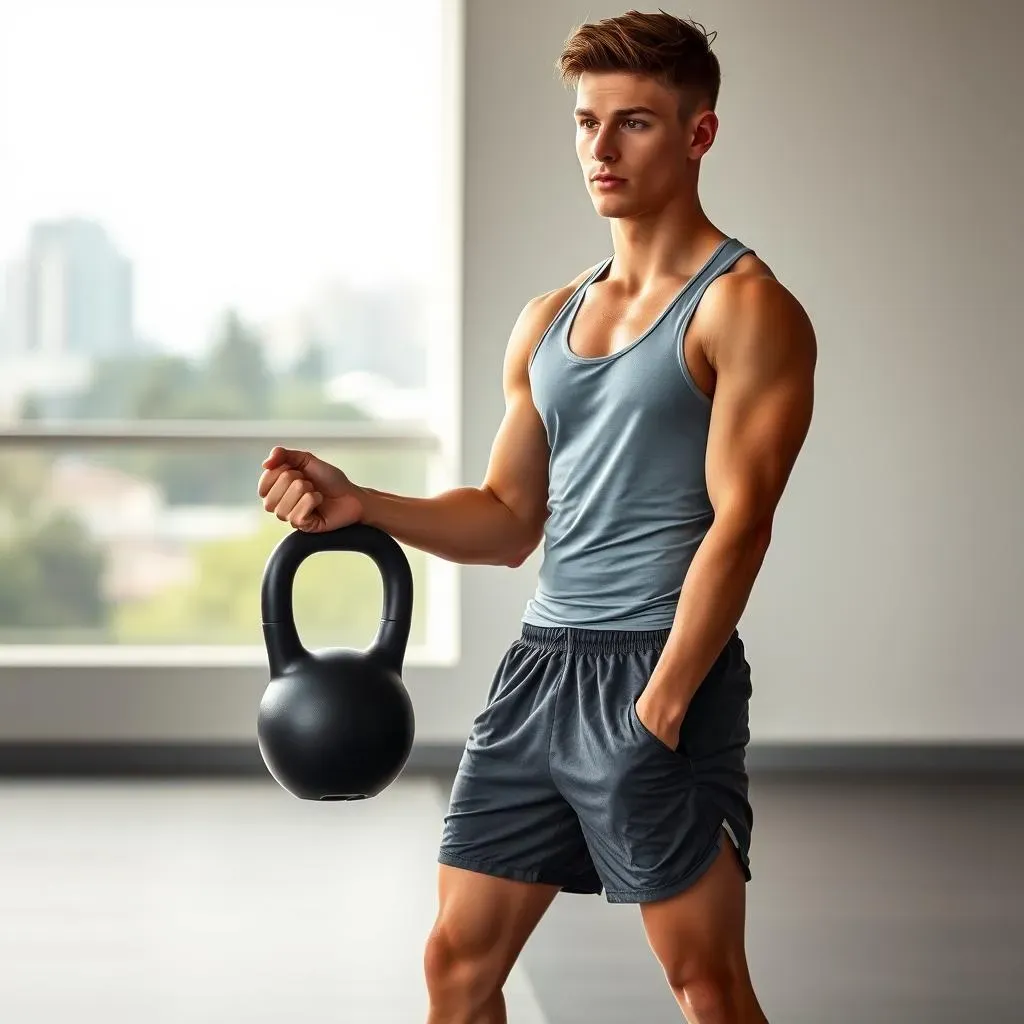
Getting Started: The 20Minute Beginner Kettlebell Workout
Your Quick Start Guide
Alright, let's get to the good stuff. This isn't some crazy, hour-long sweat fest. We're talking a 20-minute, three-round circuit that'll get your heart pumping and your muscles working. Think of it as a quick but effective way to introduce your body to the magic of kettlebells. The goal here is to focus on form, not speed. So, ditch the idea of going full beast mode right away. We're aiming for controlled movements and feeling the burn in the right places. Remember, it's about building a solid foundation, not breaking yourself.
This workout includes six key exercises, and we'll be doing each for a set amount of time before moving on to the next. We're talking halos, goblet squats, overhead presses, kettlebell swings or Romanian deadlifts, bent over rows, and front rack reverse lunges. Sounds like a lot? Don't worry, we'll break them down one by one later. For now, just know that this combo hits all the major muscle groups. We're talking a full-body party, and your body is the guest of honor.
The 20-Minute Workout Breakdown
Before you jump in, make sure you warm up! A few minutes of light cardio, like jumping jacks or high knees, and some dynamic stretches will do the trick. Now, for the workout itself: you'll do each of the six exercises for 45 seconds, followed by a 15-second rest. After you've completed all six, that's one round down. You'll repeat that two more times, for a total of three rounds. That's it! Short, sweet, and effective. Now, if you're feeling like a superhero after the first round, that's awesome. But, don't push it too hard too soon. Consistency is key in the long game.
Remember, the goal isn't to become a kettlebell master overnight. It’s about learning the movements, getting comfortable with the weight, and building that mind-muscle connection. So, don't stress if you're not perfect on day one. We all start somewhere. Just breathe, focus, and enjoy the process. And if you need a little extra guidance, don't hesitate to check out some online videos to see the exercises in action. There are tons of free resources out there to help you along your journey.
Exercise | Time | Rest |
|---|---|---|
Halos | 45 seconds | 15 seconds |
Goblet Squats | 45 seconds | 15 seconds |
Overhead Presses | 45 seconds | 15 seconds |
Kettlebell Swings or Romanian Deadlifts | 45 seconds | 15 seconds |
Bent Over Rows | 45 seconds | 15 seconds |
Front Rack Reverse Lunges | 45 seconds | 15 seconds |
Mastering the Basics: How to Hold a Kettlebell
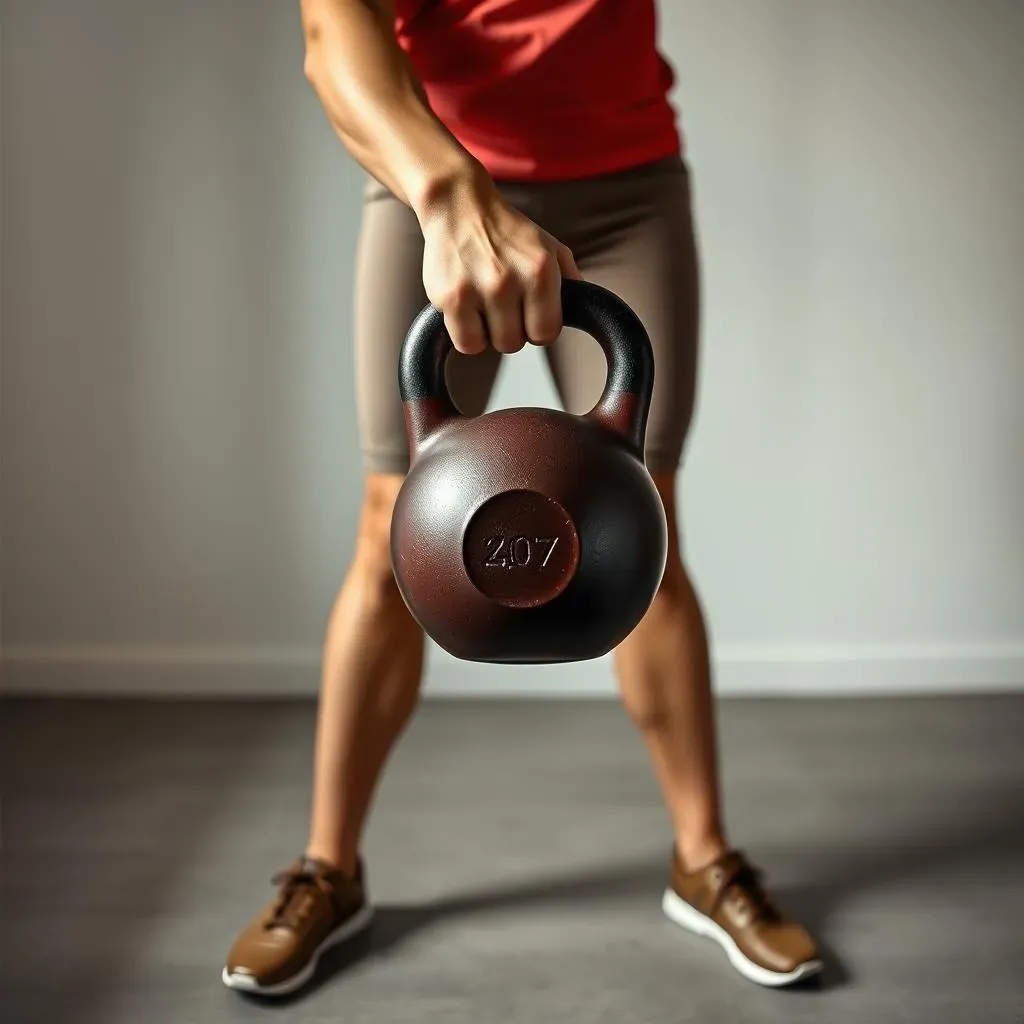
Mastering the Basics: How to Hold a Kettlebell
The Grip: Not as Simple as it Looks
Alright, before you start swinging that kettlebell around like a medieval weapon, let's talk grip. It's not just about grabbing it any old way. A proper grip is key for safety and effectiveness. You'll want a grip that feels firm but not like you're trying to crush a diamond. Think of it like shaking hands with a friend – firm, but not bone-crushing. You're aiming for a neutral grip, where the handle sits diagonally across your palm, not too high in your fingers nor too low in your palm. This allows for better control and keeps the weight from slipping.
There are a few different grips you'll encounter, but for beginners, the standard grip is your go-to. Imagine you're holding a hammer, but instead of the hammer head, you've got a round weight. That's the feeling you're going for. Keep your wrist straight and avoid letting it bend or flex, that's how you get hurt. Your grip should be secure enough to control the kettlebell, but not so tight that your knuckles turn white. A good grip means you’re ready to move the weight, not just hold on for dear life. Remember, practice makes perfect, so don’t worry if you don't nail it right away. Just keep practicing until it feels like second nature.
The Stance: Foundation for Success
Now that you've got the grip down, let's talk about your stance. Just like a house needs a solid foundation, so does your kettlebell workout. You don't want to be wobbly like a newborn giraffe. Stand with your feet about shoulder-width apart, or a little wider for some exercises, and make sure they're firmly planted on the ground. Feel the floor beneath your feet and engage your core. Think of your body as a strong, stable base for the kettlebell. This will help you maintain balance and control throughout your workout.
Your knees should be slightly bent, not locked, and your back should be straight, not hunched over like you're searching for lost coins. Imagine a straight line from your head to your tailbone. This neutral spine position is essential for protecting your back. Don’t be afraid to adjust your stance as you move through the exercises. Sometimes a slight shift can make all the difference. Remember, your stance is the foundation for all your movements, so take the time to get it right. Once you have a good stance, the rest will fall into place much easier.
Grip Type | Description | Best For |
|---|---|---|
Standard Grip | Handle diagonally across the palm. | Most exercises |
Hook Grip | Fingers wrapped tightly around the handle. | Heavy swings, deadlifts |
Overhead Grip | Used when the kettlebell is above the head. | Overhead presses, snatches |
Six Essential Kettlebell Exercises for Beginners
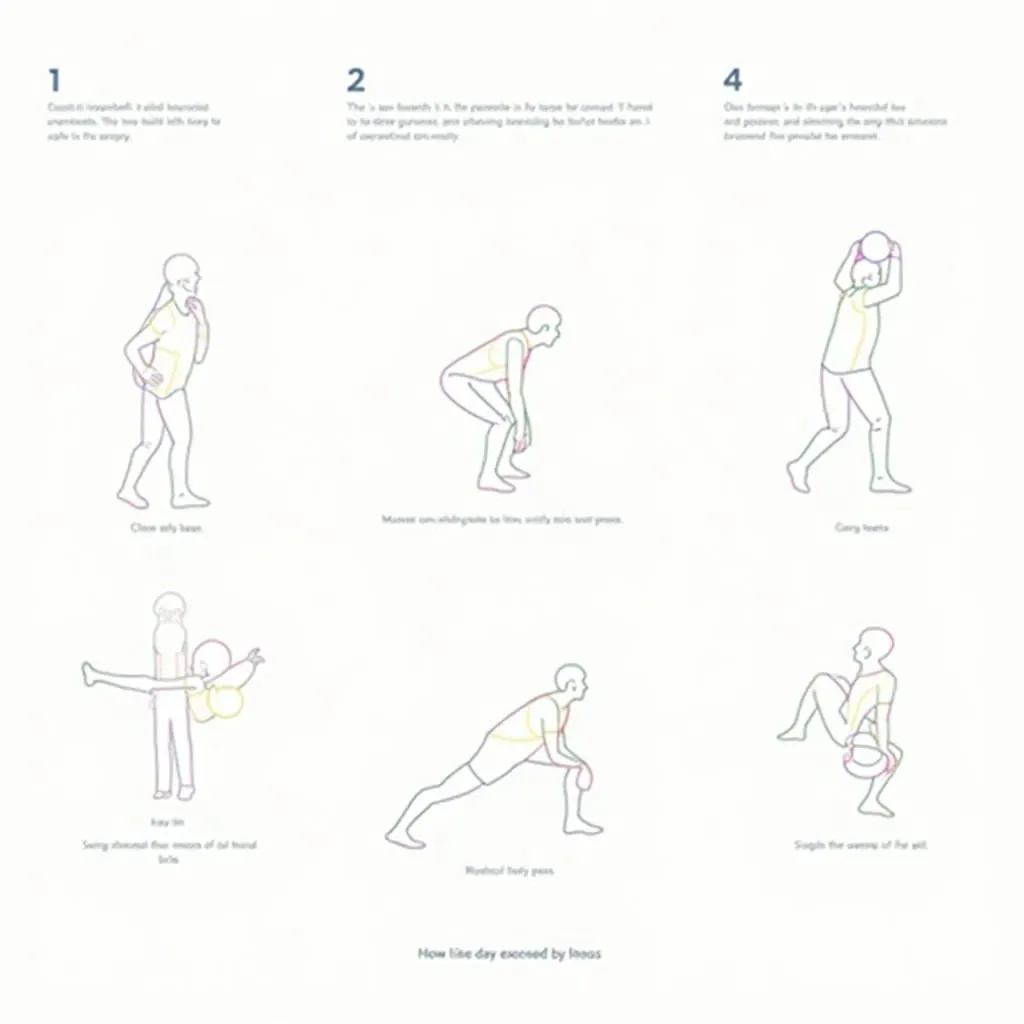
Six Essential Kettlebell Exercises for Beginners
Halo: The Gentle Warm-Up
Okay, let’s kick things off with the halo. This exercise isn't about power; it's about mobility and getting those joints ready to rock. Hold the kettlebell by the horns (that's the handle, for those not in the know) in front of your chest. Now, slowly trace a circle around your head with the kettlebell. Keep your core engaged and your movements controlled. It's like you're drawing a halo, hence the name. This isn't a race, so take your time and focus on smooth, fluid motions. If you feel any pinching or discomfort, ease up and maybe try a smaller circle. The goal here is to get those shoulders and upper back nice and limber.
Think of the halo as your body's way of saying, "Alright, I'm ready for some action." It’s a fantastic way to prepare your body for the more intense exercises to come. Plus, it's a great way to improve your shoulder mobility, which is something we could all use a little more of. So, embrace the halo, and let it be your guide to a smoother, more effective workout. Remember, it’s not about how fast you can go, but about how well you can move.
Goblet Squat: Your New Best Friend
Next up, the goblet squat. This one's a game-changer for building lower body strength. Hold the kettlebell close to your chest, like you're cradling a baby – but a heavy, iron baby. Now, squat down, pushing your hips back and keeping your chest up. Imagine you're sitting in a chair, but a chair that’s way down there. Your elbows should track inside your knees, and your back should stay straight. Go as low as you comfortably can, but don't force it. The goal is to feel the burn in your quads and glutes, not in your lower back.
The goblet squat is a fantastic exercise because it's a full-body move that also helps improve your core stability. It's like a secret weapon for building a strong and functional lower body. Plus, it’s a great way to get comfortable with the kettlebell. If you're struggling with regular squats, the goblet squat can be a great way to improve your form and build confidence. Just remember to keep that chest up, core engaged, and go at a pace that feels good for you. And if you need a mirror to check your form, go for it. There's no shame in making sure you're doing it right.
Exercise | Key Benefits | Tips |
|---|---|---|
Halo | Shoulder mobility, warm-up | Slow, controlled movements |
Goblet Squat | Lower body strength, core stability | Keep chest up, core engaged |
Overhead Press: Strength From the Ground Up
Now, let's take it up a notch with the overhead press. This exercise is all about building upper body strength and power. Start with the kettlebell in the rack position, which means it’s resting on your forearm, close to your chest. From there, press the kettlebell straight up overhead, extending your arm fully. Make sure to keep your core engaged and your back straight. It's like you're reaching for the sky, but with a kettlebell in hand. Lower the weight back down slowly and repeat. It's not just about lifting the weight; it's about controlling it on the way up and the way down.
The overhead press is a great way to build shoulder strength and stability, and it also works your triceps and core. It's a full-body movement that requires coordination and control. If you're new to this exercise, start with a lighter weight to get the form down, and don't be afraid to pause and adjust if you need to. It's all about building a solid foundation, not about pushing yourself too hard too soon. Remember, your body is your temple, so treat it with respect and listen to what it's telling you.
Choosing Your Weapon: What Type of Kettlebell Is Best?
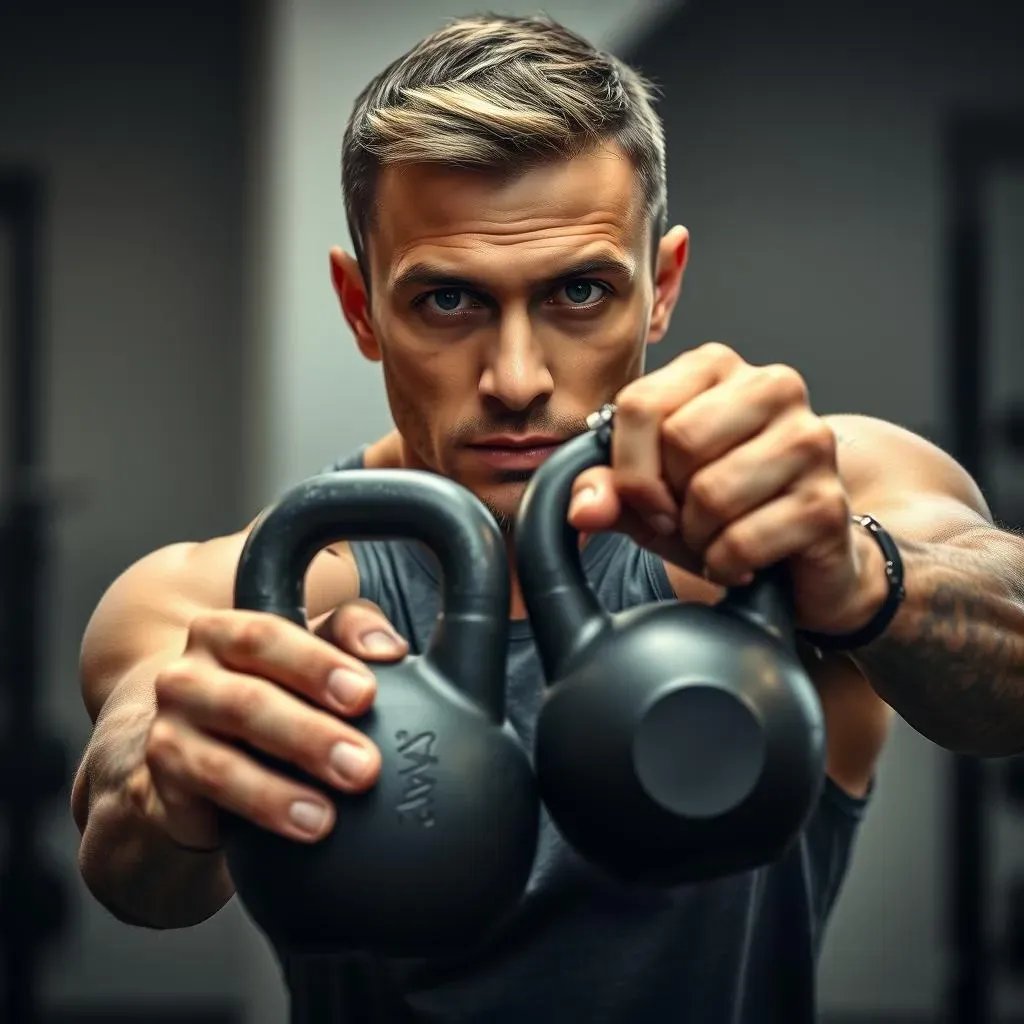
Choosing Your Weapon: What Type of Kettlebell Is Best?
Material Matters: Steel vs. Cast Iron
Okay, so you're ready to buy a kettlebell, but they're not all created equal. The first thing you'll notice is that they come in different materials. The most common are cast iron and steel. Cast iron kettlebells are the classic choice. They're durable, solid, and have a good feel. Think of them as the old-school, reliable workhorses. Steel kettlebells, on the other hand, are often a bit more modern. They can be a bit more precise in terms of weight and size, and they sometimes have a smoother finish. Some folks prefer steel for its sleekness and consistent sizing. But honestly, for a beginner, either cast iron or steel will do the trick. It really comes down to personal preference and what you can find available.
Don't overthink the material too much. What's more important is the weight and the handle. You want something that feels good in your hand, that you can control, and that will help you build strength and get comfortable with the movements. So, before you start comparing the metallurgy of different kettlebells, make sure you focus on the basics first. And remember, it's not the kettlebell that makes the workout, it's you!
Weight: Start Light, Go Far
Now, let's talk weight. This is a big one, especially for beginners. It's so easy to want to grab the heaviest kettlebell in the store and try to be a hero, but trust me, that's a recipe for disaster. Start light. I mean really light. We're talking something you can lift comfortably with good form for all the exercises. For most beginners, that might be 8-12kg for women and 12-16kg for men. But that’s just a starting point, and it can vary a lot based on your fitness level. It's much better to start too light than too heavy. Remember, it's not about ego lifting; it's about building a solid foundation.
You should be able to do all the exercises with good form, not straining or struggling. If you’re wobbling all over the place or your form is falling apart, that weight is too heavy. It's better to do more reps with a lighter weight and proper form than a few reps with a heavy weight and bad form. You can always increase the weight as you get stronger. This is a journey, not a sprint. So, be patient with yourself, start light, and enjoy the process. Once you get the hang of it, you can start experimenting with heavier weights. But for now, focus on the fundamentals.
Kettlebell Type | Pros | Cons |
|---|---|---|
Cast Iron | Durable, classic feel | Can be less precise in weight |
Steel | Precise weight, smooth finish | Can be more expensive |
Adjustable | Versatile, good for home use | Can be less durable |
Handle with Care: Grip and Comfort
Finally, let's talk about the handle. This is where you'll be making contact with the kettlebell, so it's important to get it right. The handle should be smooth and comfortable to hold, not too thick or too thin. You want a handle that allows you to maintain a good grip without slipping. Some kettlebells have wider handles, while others have thinner ones. It's mostly personal preference, but as a beginner, you might prefer a handle that's not too thick. You want to be able to get a good grip without feeling like you're about to drop the weight.
Also, consider the finish of the handle. Some handles are coated, while others are bare metal. A coated handle can be more comfortable, but it might also be more slippery if your hands get sweaty. A bare metal handle provides a good grip, but it can be a bit rough on your hands if you’re not used to it. You can always use chalk or gloves if you need extra grip or protection. When you're choosing a kettlebell, don’t underestimate the importance of the handle. It's the connection between you and the weight, so make sure it feels right. And remember, a comfortable handle is a happy handle.
Stepping It Up: The Intermediate Kettlebell Workout
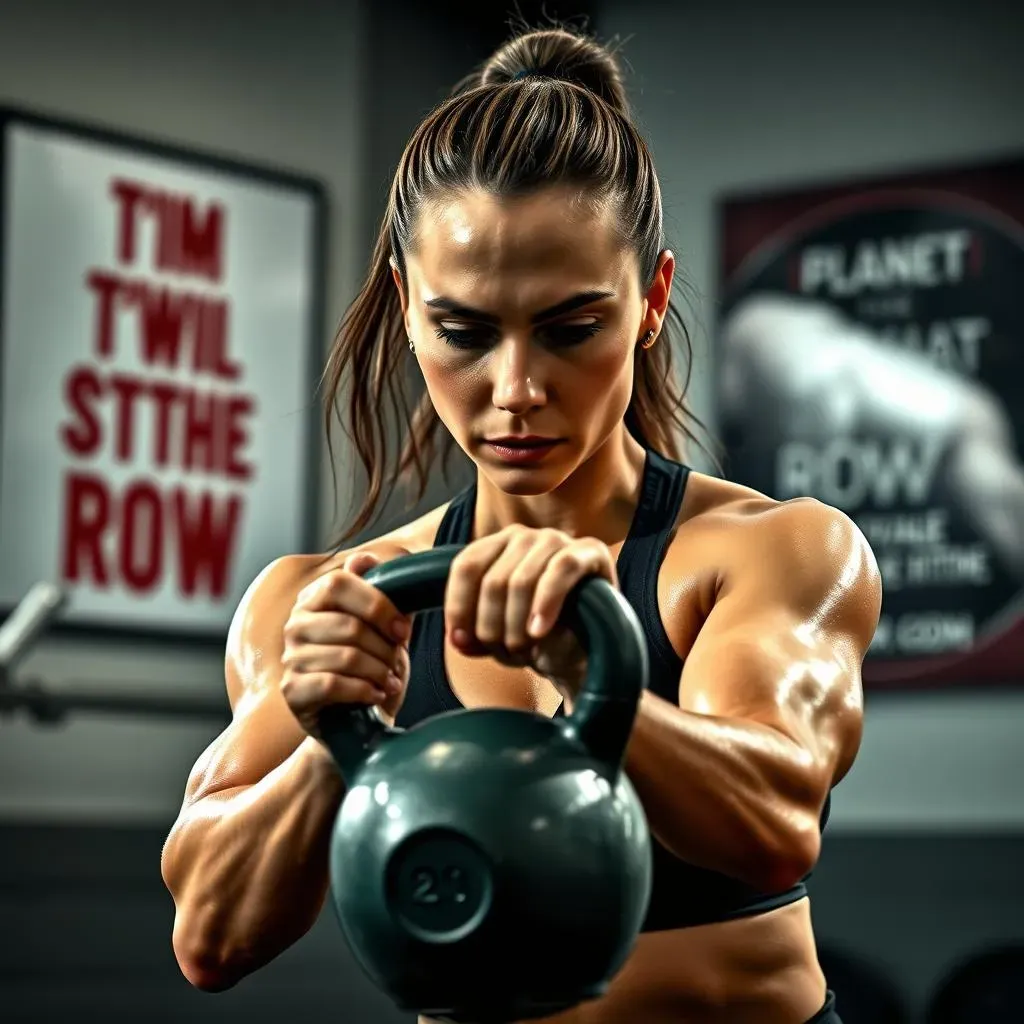
Stepping It Up: The Intermediate Kettlebell Workout
Ready for More? Let's Crank It Up
So, you've mastered the beginner routine, huh? You're not feeling like a wobbly newbie anymore? Awesome! It's time to kick things up a notch with an intermediate kettlebell workout. We're not talking about going full-on CrossFit mode, but we are going to introduce some new exercises that’ll challenge you in different ways. Think of this as the next level in your kettlebell journey. It's where you start to really feel the progress and see the results of your hard work. It's all about building on the foundation you've already laid down.
This intermediate workout is designed to push your strength, endurance, and coordination. We'll be adding in some more complex movements that require more control and body awareness. Don't worry; we're not throwing you into the deep end without a life jacket. We'll be taking it step by step, focusing on proper form and technique. Remember, the key is to listen to your body and push yourself, but not to the point of injury. It's about finding that sweet spot where you're challenged but still in control.
New Moves, New Challenges
Alright, let's talk about the new exercises. We're going to be adding in kettlebell lateral goblet lunges, which are a fantastic way to challenge your legs and glutes while also working on your balance. We'll also be doing renegade rows, which will test your core strength and stability. These exercises require a bit more coordination than the beginner moves, but once you get the hang of them, you'll feel like a total badass. The goal here is to add some variety to your routine and keep your body guessing. It's all about preventing plateaus and keeping things interesting.
Remember, just like with the beginner workout, proper form is key. It's better to do fewer reps with good form than a bunch of reps with bad form. Don't be afraid to slow down and focus on each movement. If you need to, watch some videos or ask a trainer for guidance. It's all about making sure you're doing it right. Once you've got the form down, you can start to increase the intensity and weight. But for now, focus on the fundamentals and enjoy the process of learning these new exercises. It's all about the journey, not just the destination.
Exercise | Focus | Why It's Great |
|---|---|---|
Kettlebell Lateral Goblet Lunges | Legs, glutes, balance | Improves lower body strength and stability |
Renegade Rows | Core, back, arms | Builds core strength and upper body power |
Sample Intermediate Workout
Now, let's put it all together. A good intermediate workout could look something like this: Start with a 5-minute warm-up, just like before. Then, do 3 rounds of the following circuit: 45 seconds of kettlebell lateral goblet lunges on each side, 45 seconds of renegade rows, and 45 seconds of kettlebell swings, followed by 15 seconds of rest between each exercise. Repeat the whole thing three times. After that, do a quick cool down with some stretches. This will get your heart rate up and your muscles working. It's a great way to challenge yourself while also building strength and endurance.
This workout is designed to be challenging, but also manageable. If you need to take more rest between sets, go for it. And if you feel like you can do more, don't be afraid to add another round or increase the weight. The key is to listen to your body and adjust the workout as needed. Don't be afraid to experiment and find what works best for you. Remember, it's your workout, so make it your own. And if you're feeling good, high five yourself, because you're doing awesome.
Kettlebells and Weight Loss: Can You Really Do It?

Kettlebells and Weight Loss: Can You Really Do It?
The Truth About Kettlebells and Calories
Alright, let's get down to brass tacks: can kettlebells actually help you lose weight? The short answer is yes, but it's not a magic bullet. Kettlebells are a fantastic tool for building muscle, burning calories, and improving your overall fitness. But weight loss is complex and it involves more than just exercise. Think of kettlebells as your trusty sidekick in the battle against the bulge. They help you torch calories during your workout, and because they build muscle, they can boost your metabolism, so you burn more calories even when you're resting. It's like having a secret weapon in your weight loss arsenal.
However, it's crucial to remember that exercise is only one piece of the puzzle. Nutrition plays a huge role too. You can’t out-train a bad diet. If you're crushing it with your kettlebell workouts but then you’re eating a pile of junk food, you're not going to see the results you want. Weight loss is all about creating a calorie deficit, which means you need to burn more calories than you consume. Kettlebells can help with the burning part, but you need to manage the consuming part as well. It's a team effort, and both exercise and nutrition need to be working together. So, if you're serious about losing weight, you need to focus on both aspects of the equation.
Factor | Role in Weight Loss |
|---|---|
Kettlebell Exercise | Burns calories, builds muscle, boosts metabolism |
Nutrition | Creates calorie deficit, provides fuel for the body |
The Importance of a Balanced Diet
Speaking of nutrition, let's talk about what a balanced diet actually looks like. It's not about starving yourself or depriving yourself of all the foods you love. It’s about making smart choices and focusing on whole, unprocessed foods. Think lots of fruits, vegetables, lean proteins, and whole grains. These foods provide your body with the nutrients it needs to function properly and support your workouts. It's like fueling your body with premium gas, instead of the cheap stuff that'll make your engine sputter. A balanced diet will also help to keep your energy levels up, so you can crush your kettlebell workouts and feel amazing.
Don't get me wrong, it's okay to indulge in your favorite treat every now and then. Life is too short to deprive yourself completely. But the key is moderation. Most of the time, you should be focusing on fueling your body with the good stuff. And remember, hydration is also key. Drinking enough water is essential for all bodily functions, including weight loss. So, make sure you're staying hydrated throughout the day, especially before, during, and after your workouts. A balanced diet and plenty of water are the dynamic duo you need to power your kettlebell journey.
"The doctor of the future will give no medicine, but will interest his patients in the care of the human frame, in diet and in the cause and prevention of disease." - Thomas Edison
Consistency is Key
Finally, let's talk about consistency. This is where the real magic happens. It's not about doing one crazy workout and then forgetting about it for a week. It's about showing up consistently, day after day, week after week. It's like planting a garden; you need to tend to it regularly to see the fruits of your labor. The same goes for your fitness journey. The more consistent you are with your kettlebell workouts, the better your results will be. And if you miss a day or two, don't beat yourself up about it. Just get back on track as soon as you can. It's about progress, not perfection.
It's also about finding a routine that works for you. You don't have to spend hours in the gym every day. Even just 20-30 minutes of focused kettlebell training a few times a week can make a huge difference. The key is to find something you enjoy and that you can stick with long-term. And remember, it's a journey, not a destination. So, be patient with yourself, celebrate your successes, and keep moving forward. The results will come, I promise. Just keep showing up, and you'll be amazed at what you can achieve.
- Consistency is more important than intensity.
- Find a routine you enjoy.
- Don't be afraid to start small.